Firepower M1 "Abrams" with a mass like an armored personnel carrier: American light tank "Stingray"
More recently, the United States has taken to mass production Tanks "Gryphon 2" (we detail about this 38-ton "light" monster wrote , thus ending a multi-year history with the search for a replacement for the Sheridan light tank, during which the military studied many interesting prototypes that did not receive a ticket to life. However, one of these projects was lucky. It was the Stingray, a combat vehicle that combined the firepower of the heavy M1 Abrams and weighed just over 21 tons. He did not enter service with the American army, but was warmly received by the Thai military.
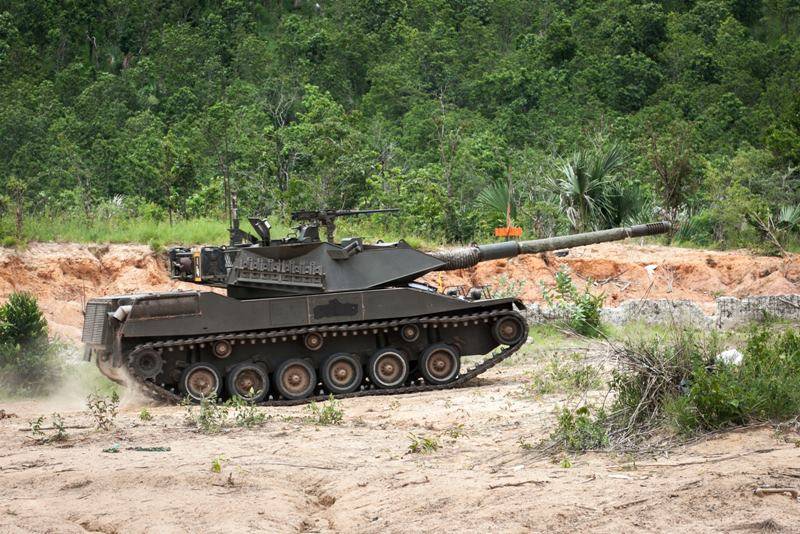
Expeditionary tank
There is no point in denying the obvious fact that the Soviet Union and the United States, being opposing superpowers, were actively preparing for a full-scale war, which included both classical weapons and nuclear weapons. weapon. Fortunately, the expectations were not destined to come true, however, local conflicts in completely remote territories, where the USSR and the States defended their interests and spheres of influence, became an alternative to the atomic apocalypse and the transformation of Europe into a continuous battlefield. An example is the Vietnam and Korean wars.
The United States was well aware that a direct clash with the Soviet army was less likely than another "mess" in a distant corner of the world, and therefore the priorities in the mid-1970s of the American military began to gradually change. To put it simply: the focus of the warriors has shifted to providing rapid reaction forces that could quickly reach remote areas and begin combat missions long before the arrival of the main forces, if any are needed at all.
A separate issue was the armament of mobile groups. In particular - tank. At that time, the Sheridan light aluminum tank was already in the American army, but the experience of its use in the Vietnam War, although it included some positive aspects, was generally assessed as negative. An alternative was needed.
The logistical requirements for the new light tank, which partly changed over time, included a small combat weight for the possibility of either parachute landing, or, which later became a priority, transporting two combat vehicles at once in one flight in a transport aircraft.
Equally important was the gun of the future tank. Considering that the armor of Soviet equipment did not stand still, the main armament was to be a high-impulse cannon capable of penetrating enemy armor.
All these military requests were formed in the AGS (Armored Gun System) program launched in 1981, another epic to create a light combat vehicle. Several companies took part in it at once, among which was Cadillac Gage, which presented its initiative development to the military court - the Commando Stingray light tank. The tank, which is still recognized by some experts as the optimal ratio of firepower and mobility, including air transportability.
Layout and armor
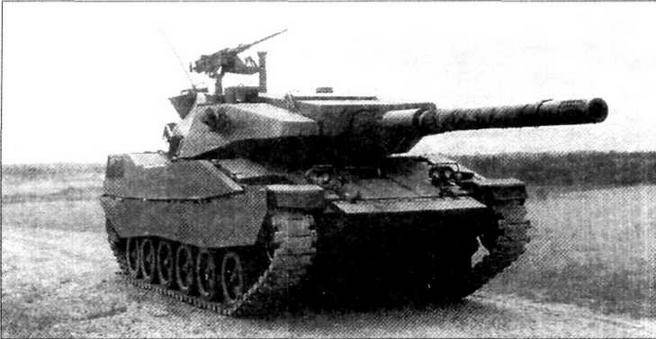
"Commando Stingray", whose name was later shortened to simply "Stingray", was carried out as part of a classic layout with a control compartment in the bow of the hull, a fighting compartment in the middle part and an engine-transmission compartment in the stern.
The seating of the crew members, in principle, corresponded to the same "Abrams": the driver was located in the middle of the hull in the bow, the gunner and commander were one after another in the tower to the right of the gun, and the loader was to the left.
When creating the tank, the engineers decided to completely abandon the “mix” that was used on the Sheridans, when the hull was made of aluminum armor and the turret was made of steel. Therefore, the choice fell exclusively on high-hardness steel under the marking "Kedloy".
With a maximum thickness of steel sheets up to 25 mm, the Stingray armor provided full protection against 14,5 mm bullets in the frontal projection, as well as against all 7,62 mm small arms on the sides and stern. The necessary resistance parameters were also provided due to the large angles of inclination of the armored surfaces in the forehead of the turret and hull. However, this measure brought not only benefits, but also inconveniences: the wedge-shaped tower, when turning at 12 o'clock, did not allow the driver to leave his seat through the hatch, so it had to be turned 90 degrees to the left or right.
Nevertheless, despite some shortcomings, the Stingray's booking met all the requirements and even somewhat exceeded them, since the frontal protection was already partly similar to the Soviet BMP-2.
Chassis and engine
The undercarriage of the tank from Cadillac Gage consists of six dual road wheels on each side with the location of the drive wheels in the stern and guides in the bow. The suspension, according to the classics, is individual torsion bar, and with torsion bars they did not reinvent the wheel and took them from the 155-mm M109 self-propelled artillery mount. Here, as a "donor", the M41 Walker Bulldog tank can be attributed, from which the Stingray suspension received some elements.
The power plant of the new tank was based on a transversely mounted 8-cylinder diesel engine 8V-92 TA with a capacity of 535 horsepower manufactured by Detroit Diesel. Together with him, in a single removable block, an automatic five-speed transmission XTG-411-2A was mounted. Working in pairs, they accelerated the Stingray weighing 21,6 tons to 71 km / h on the highway.
But the suspension assembled from elements of self-propelled guns and a light tank, which dampens hull vibrations, as well as an automatic transmission, are not all the amenities that contribute to a comfortable ride at high speeds. There was also steering, which reduced the energy consumption of the driver.
Armament and fire control complex
As mentioned earlier, the US military took into account the fact that a light tank was very likely to collide with modern Soviet tanks, the armor of which was not so easy to take even with powerful guns, not to mention low-momentum ones. Therefore, the armament of the Stingray was taken seriously.
However, the choice was small. The most powerful gun in mass production at the beginning of the 80s in the United States was a licensed copy of the British L7 rifled gun of 105 mm caliber. It was also installed in the M1 Abrams tanks, until it was later replaced by a more powerful 120 mm caliber.
But a standard 105-mm gun could not be installed in a light tank - too much recoil force had a powerful effect on the hull and turret, which ultimately could not withstand the loads.
The solution to this problem was a modified version of the gun for light combat vehicles. Unlike its counterpart, it had a muzzle brake, an improved propellant gas ejector and an upgraded recoil system. All these measures made it possible to halve the recoil force when fired and thereby soften the impact on the hull and turret of the Stingray.
Thus, the Stingray light tank, having a 1-round ammunition load unified with the M36 Abrams, had firepower almost identical to this heavy tank, which could become a serious threat to Soviet combat vehicles of that time.
The armament of the tank was supplemented by two machine guns: a 7,62 mm caliber coaxial with a cannon and a 12,7 mm caliber mounted on the turret roof in front of the commander's hatch. However, there was a choice of caliber, so a 7,62-mm machine gun could also “move” to the tower.
Weapons control - aiming at the target - was carried out using a two-channel gunner's sight, working both in daytime conditions and at night - in the infrared range. A laser rangefinder was also integrated into the sight, which makes it possible to significantly increase the accuracy of fire with minimal delays in preparing a shot.
The tank commander, despite his secondary role in pointing the gun at the target, could also independently fire the gun. To do this, he had a day / night sight-observation device and, as an addition to increase visibility from the tank, seven periscope panoramic view devices.
Increased firing accuracy was also provided by an electronic ballistic computer that migrated to the Stingray from the V-150 armored car, armed with a 90-mm cannon. This computing device, which collected real-time data such as the range to the target, its speed, the roll angle of the tank itself, atmospheric pressure, wind speed and direction, etc., automatically gave the necessary corrections for firing.
Conclusion
The first assembled Stingray prototype was presented at the end of the summer of 1984. The military really liked this vehicle, although this was to be expected, since the tank turned out to be quite successful and combined the highest firepower with a small mass and extremely high mobility. It was even recommended for adoption by the US 9th Motorized Infantry Division. However, banal circumstances prevented the plans.
The tank came out quite expensive - about a million dollars per unit at that time. And the program itself to create a new lightweight tank was already bursting at the seams: the conservatism of the highest military officials, who did not want to change the old for the new, was affecting.
Ultimately, the Stingray was abandoned in the United States, but interested in it in Thailand, where 1986 units were delivered between 1990 and the 106s. Cadillac Gage also tried to conclude an agreement for the supply of tanks to Malaysia, but did not achieve positive results.
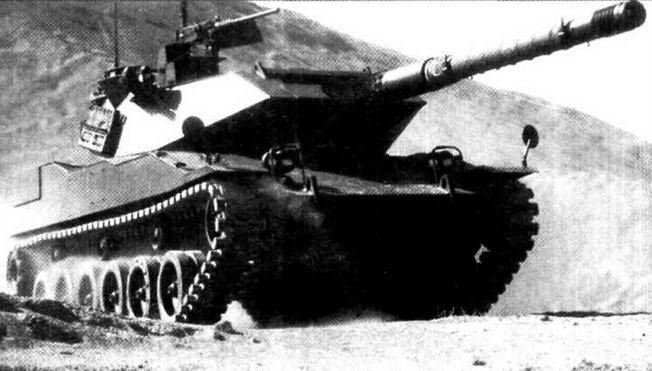
In the mid-90s, Cadillac Gage decided to re-enter the armored vehicle market, but with an updated version of the Stingray 2 tank. Unlike the base model, this vehicle had reinforced armor that could protect against 30 mm armor-piercing shells in the frontal projection and 20 mm shells in the side. The changes also affected the fire control system, which was now completely identical to the M1A1 Abrams tank, including aiming automation and thermal imaging devices.
"Stingray 2" was offered for purchase by the armies of Thailand and Taiwan, but was refused.
To date, the Stingray continues to regularly carry out combat service in Thailand, whose tank fleet has already become one of the most diverse in the world: from the American M41 Walker Bulldog and M60 to the Chinese VT-4 and Ukrainian Oplots.
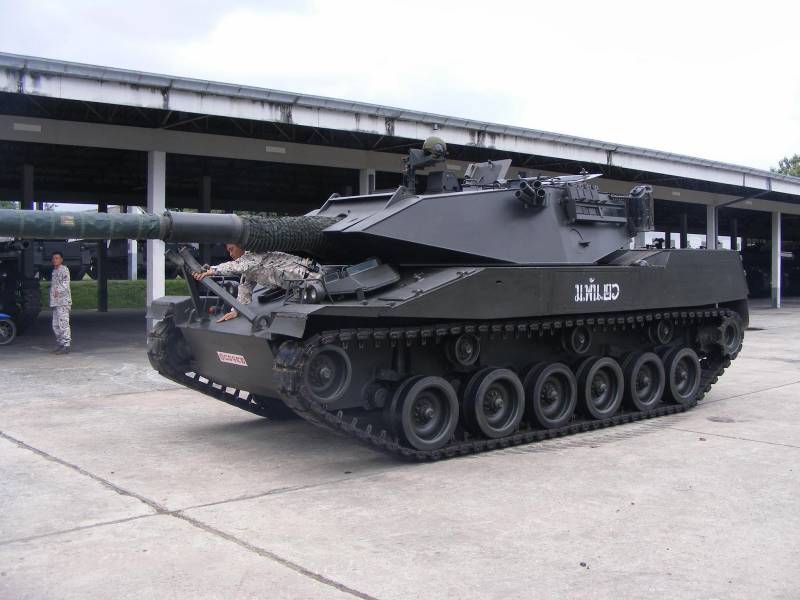
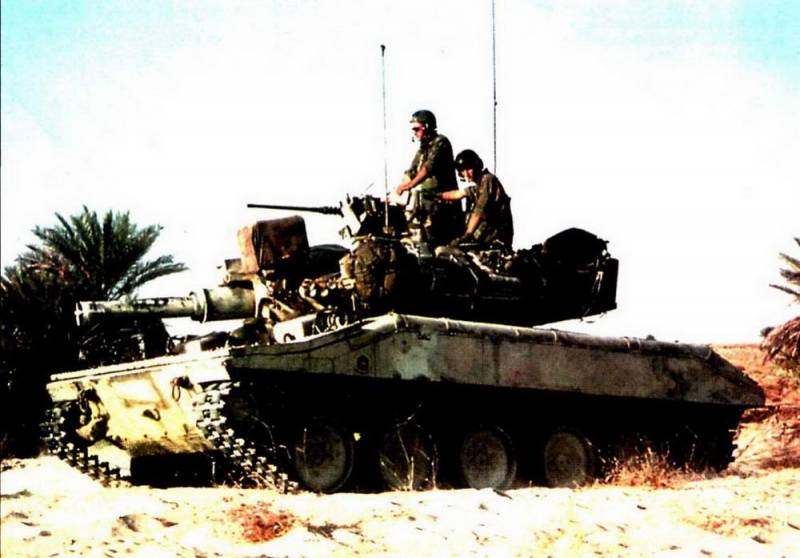
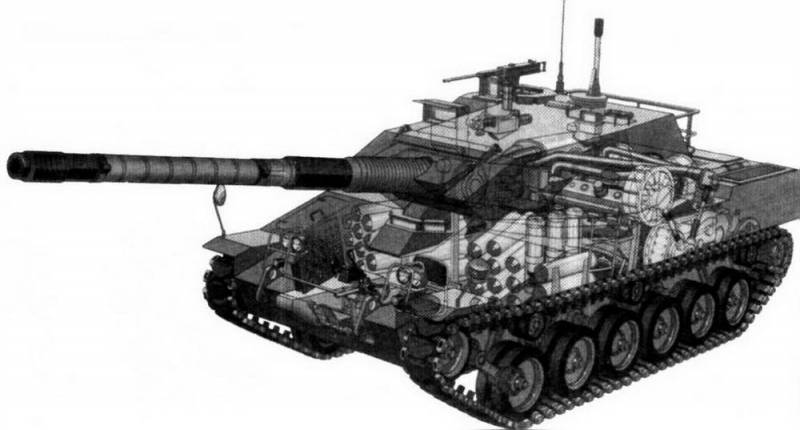
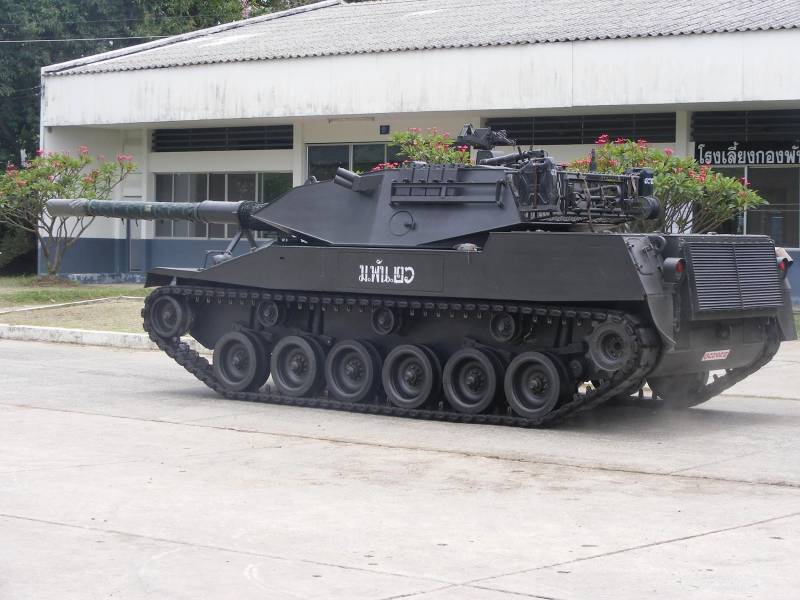
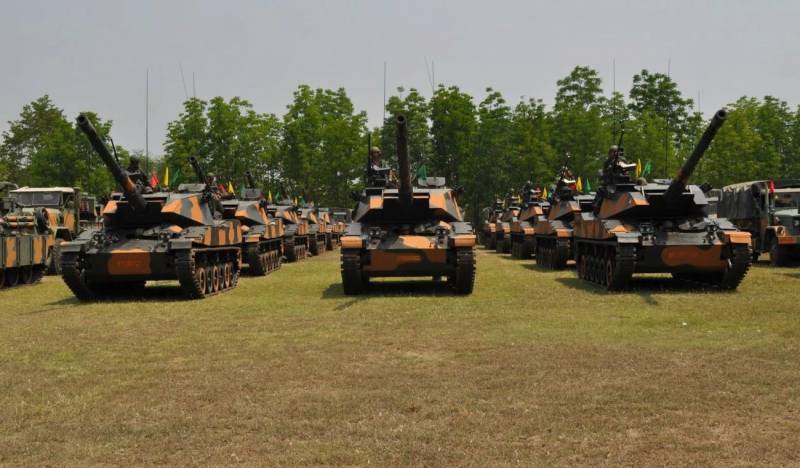
Information